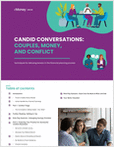This week the post-crisis bull market in stocks is celebrating its eighth birthday, which raises the question: Will it make it to number nine?
Sam Stovall, chief investment strategist at CFRA, says in his latest note that there’s a good chance the rally will continue but the gains won’t be meteoric. He’s targeting 2,460 for the S&P 500 in the next 12 months, which is less than 4% above current levels.
Stovall notes several reasons he expects the rally will slow but not end “despite its age and rich valuation.” The current bull market is the second longest-running since the 10-year tech bubble that began on Oct. 11, 1990 and ended March 24, 2000. Its 12-month price-to-earnings ratio for the S&P 500 is 25, compared with 30 during the tech bubble.
- The dividend of the S&P 500 is 2%, 50 basis points less than the 2.5% yield on the 10-year Treasury note. Since 1953, whenever the yield on the S&P 500 was within one percentage point of the yield on the 10-year Treasury, the S&P has risen almost 80% of the time, and the average gain in the following 12 months was 11%.
- The yield curve is not indicating a recession. When it has in the post-World War II period, the spread between the 1-year and 10-year Treasuries was below 50 basis points or negative. It’s currently a positive 1.5 percentage points.
- Other “fairly reliable” pre-recession indicators including the year-over-year changes in housing starts and consumer confidence are also “well above” prior levels that signaled the possibility of an impending recession.
- The Federal Reserve is expected to try to balance rate hikes to limit inflation without constraining GDP growth, and tax reform could help boost growth.
Despite these supports for further gains in the stock market, Stovall is not entirely sanguine about the current market situation and admits there will likely be occasional stumbles ahead.
“Volatility will remain a potential challenge to the intestinal fortitude of many investors and cause their emotions to become their portfolio’s worst enemy,” he writes. He advises investors “to be on the lookout for a FOMO (fear-of-missing-out) mindset that could signal overconfidence and sound the final lap.”








 March 08, 2017 at 10:38 AM
March 08, 2017 at 10:38 AM










